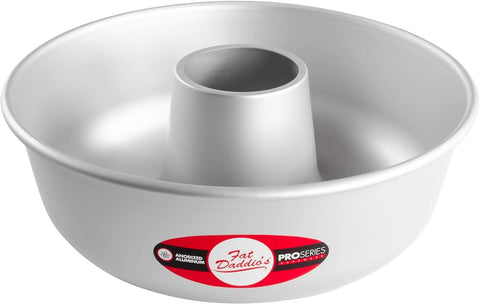History of Rum Cake & What to Expect from Chez Moi
Many people say rum cake originated in the Caribbean sometime in the 18th century. Did you know other cuisines have their version of rum cake?
French - Baba au Rhum - yeast cake with dried fruit and hot rum soak
Italian - Babà Napoletano – Neapolitan rum babà - citrusy rum soak
Cuban - Cake de Ron
________________________________________________________
My rum cake is a golden cake with a mild rum soak which I make in several different flavors.
I grew up in the northeast where a delightful woman I called Grandma Hagans made me rum cake. She baked her rum cake with quite a bit more rum than I use, but the additional sugar in her cake helped balance it out a bit. You may know my rum cake baking story started after going on a cruise to the Grand Cayman & Cozumel, participating in an onboard tasting of Cruzan rum and bringing a lot back home. Once I returned from the cruise, I decided to bake a rum cake. My mom was an incredible baker! She baked yeast rolls, peach cobbler, apple pie and cooked everything to perfection! I would bake alongside her with my EZ Bake Oven while trying to see every little thing she did. My rum cake is about the flavor coming from the rum vs. how much alcohol can we squeeze in a cake. It's a dessert, y'all, so I want you to be able to enjoy each bite without being overwhelmed by the alcohol and definitely not feeling tipsy. My experience with my recipe has been like the Three Bears: some say it's not enough rum, some say it's too much rum and many say it's just right! Like I previously mentioned, the flavor comes from the rum directly without any extracts so it's a mild flavor. For example, the flavor of my pineapple rum cake isn't like the flavor of a pineapple layer cake.
I have plans to add to this page as I find additional details to share. For now, this will give you an idea of what you can expect with my product.
__________________________________________________
A Bit of History About the Tube Cake Pan...
The tube cake pan, a staple in the world of baking, boasts a rich history intertwined with the evolution of culinary arts. Originating in the 19th century, this innovative pan was designed to address the uneven baking issues of the dense, rich cakes popular at the time. Its central tube allows heat to circulate more evenly, ensuring that the middle of the cake cooks at the same pace as the edges, thus eliminating undercooked centers.The tube cake pan is perhaps most famously associated with the Angel Food Cake, a light, fluffy dessert that required the unique design of the tube pan to rise properly. Over the years, the tube cake pan has evolved, incorporating non-stick coatings and removable bottoms for easier cake release. Today, it remains a beloved tool for baking enthusiasts, enabling the creation of a wide array of cakes, from the traditional Bundt cake to the modern chiffon cake, each with its distinctive shape and texture, paying homage to the pan's enduring legacy in baking history.
This is my favorite everyday cake pan used for Chez Moi's large rum cake!
(If you purchase thru this link, I may earn a small commission from Amazon. Your price is unaffected.)
